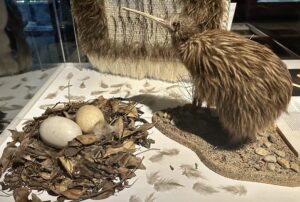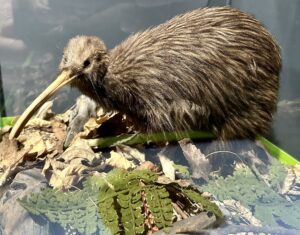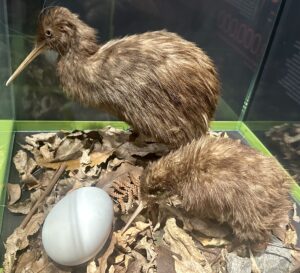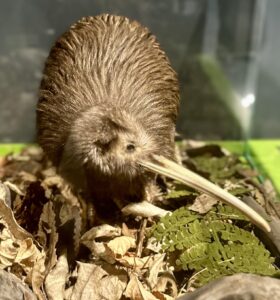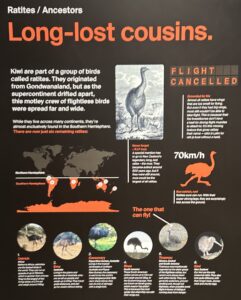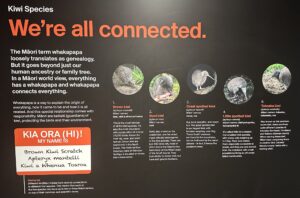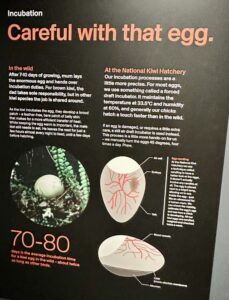The New Zealand Kiwi bird is a vital symbol of the country’s unique biodiversity and cultural identity, but its survival is threatened by human activities and environmental changes, making it imperative for conservation efforts to be implemented.
The kiwi bird is one of New Zealand’s most treasured national symbols. It represents more than the nation’s unique biodiversity. It is also an important cultural icon with deep significance to New Zealand’s heritage and the identity it projects around the world as a distinct place. Nevertheless, the impressive stature of the bird is overshadowed by a grim reality. The enormous decrease in kiwi populations across their native haunts has been largely the work of humans and their effects on the environment. For a long time, the nation has been at war with its own wildlife. Not intentionally, of course. But the human assault on the kiwi’s wild existence has been relentless. And it wages on. Tree removal, enclosure in sanctuaries, the fight to eradicate introduced species, and an unwillingness to allow for the loss of a species are all part of a large-scale effort to save the kiwi. Addressing these dangers is extremely important. We must not allow this great bird, a potential citizen of history’s “Endangered Species Act,” to keep on track toward oblivion. So we need to start doing something—a lot of things—very differently. Indeed, if the bald eagle is going to be around for our children, grandchildren, and who knows how many generations beyond, the rhetoric of conservation has to become the reality of our daily lives. Comprehensive conservation strategies are the only way to get there, and they encompass much more than habitat protection. They have to involve us, the human beings who also live in the eagle’s world. And they have to involve us at a fairly intimate level, because that’s the level on which we interact constantly with the eagle. This essay makes the point that immediate and constant conservation are necessary to save the endangered kiwi in the face of a changing environment. It does this by first demonstrating the environmental changes that are affecting the biota of New Zealand’s forests. Once the essay has established this problem, the real work begins as we see what conservation is taking place and what the kiwi’s future looks like, and will look like, in the near and not-so-near future.
The demand for immediate preservation of the already threatened kiwi bird’s habitat is an issue that could not be of greater importance. This is not simply because the prized kiwi is in danger; work on its behalf could be the salvation of a great many bird species. Even traditional game birds have seen declines that could threaten their very existences, many of them in the same forests the kiwi call home. The uptick in this dangerous pattern illustrates just how much our world is thrown out of ecological balance. But the situation is not hopeless. Concentrating on keystone and indicator species such as the kiwi allows a far more targeted response than is possible via the usual conservation/victim approach. Of course, it is a political issue, too, one that potentially involves changes in the way humans and their opponents live and hunt (Star Power Received). The above passage includes many words that could be substituted for simpler, more common words and phrases—and none of these substitutions would change the meaning of the text. So, I’ll go through and do that, simplifying where I can, and notating all of my changes and suggestions below. Effective strategies for conserving Andean condors must move beyond legislative acts and rely on the active involvement of the many local communities and indigenous groups that live side by side with the animals. And this community partnership is not likely, in itself, to yield enough change. Public awareness must be awakened, public will galvanized as well. And integrating science with traditional ecological knowledge, as is being done in the Andes, may yield the best approach of all. To keep the kiwi bird alive, one must make use of several strategies. Because the kiwi’s decline is primarily attributable to the twin factors of loss of habitat and predation, these strategies must focus on these two core problems. To effect any change, the wildlife managers must work within what Immanuel Wallerstein and others have called a “world ecology” or a “globalizing nature.” Like so much of the world’s ecology, significant aspects of the kiwi bird’s life now fall under the rubric of the nation-state. For this reason, the current crisis faced by the kiwi bird represents not only a profound ecological problem for New Zealand but also a profound social one.
Based on this fundamental understanding, it is clear that the New Zealand kiwi bird is incredibly important to the country as a symbol of its singular biodiversity and cultural identity. However, the survival of this species remains very much up in the air due to the kinds of activities humans have engaged in and the types of environmental changes we’ve been responsible for. Kiwi translocation efforts have been more or less successful up to this point. But, just like the various species of kiwi across both islands of New Zealand, the success of those transplants has often varied, too. And it’s not just that the Department of Conservation and the many other parties engaged in kiwi conservation have occasionally had good and bad luck. Tunnel vision and an insistence on one-size-fits-all strategies have often led to unplanned negative consequences and outright failure. Review of kiwi conservation practices a couple of years ago makes this point painfully clear. Long story short, some kinds of kiwi relocations have worked better than others. Kiwi populations face some significant impediments to their survival. Human actions lead to a strong increase in both of these pressures. They introduce unnatural predators and break up the kiwi’s natural habitat into smaller, disconnected pieces. The comprehensive conservation strategy must encounter human realities to even try to solve this problem and work on reverse effects, or at least minimizing them. The plan has these main components: resolve human- and kiwi-caused problems outside of the natural range where control is easier and less costly; decrease the impact of these two pressures that mostly affect kiwi populations within the natural range. The plan counts on human engagement, as well. Modern science combined with the ancient knowledge of local people can create strong conservation methods. These conservation methods are necessary if we want to protect a national symbol—specifically, the US bird known as the bald eagle. Right now, the contemporary work being done at Port Bolivar marks the first time that modern methods have intersected so intimately with traditional local knowledge for preserving the species. This would be a rare conservation project made all the more vital because of the widespread damage we humans have caused to the Gulf of Mexico’s fragile ecosystems.
It is important to understand the cultural importance of kiwi to New Zealand. The kiwi, not only an incredibly unique bird, is a powerful symbol of national identity and heritage. To many New Zealanders, the kiwi is not just an icon of their country but also a part of their local identity; it’s the bird they hear at night and tell stories about. Because of this, any conversation about the conservation of the kiwi is inherently a conversation about preserving a cultural touchstone and about preserving what New Zealanders hold dear. And we must not overlook that aspect if we want to understand how such a touchstone can be preserved. For a while now, the Kiwi has always been seen by the local Maori people as an exotic bird. They even counted it a “Special Taonga” (meaning “treasure” in English) to have it in New Zealand. The Maori people are known to have lived in New Zealand for over a thousand years, and the love of the land has become part of their culture. Whenever the Maori love something, you can be sure it found a special epoch in their long history. In this instance, the Maori have loved the Kiwi for a very long time, possibly even up to a thousand years. Moreover, when scientists, policymakers, and indigenous leaders work together, they can spawn something magical. Eco Maori finds inspiration in such a dynamic combination. We see science as knowledge, participation as empowerment, and culture as knowledge lived. This is a story about a partnership, with the kiwi as a common focus that touches, as itself a creature of te ao Māori, on the very deep place the indigenous people of New Zealand and “their kiwi.” at the offer counter of meringa tekanga o aotearoa.
The conservation of the kiwi bird is essentially a matter of both the necessity and the cultural duty of the human species. This amazing living creature represents a special and unique part of the environment, and if we fail to protect it, with New Zealand being the only one of the two current places where it is known to exist (the other being Stewart Island), then we, as a species and a culture, are failing to conserve something very vital. The urgent situation facing New Zealand’s kiwi populations was brought about by a series of events—deforestation, predation, and the habitat fragmentation that has occurred as a result. Events going back more than a century have led to these threats, and they have pretty much happened in sequential order, says Freeland who, with her team, has spent several years looking at this problem and its causes. “We have the luxury of hindsight. We can look at what’s happened to the kiwi and say this is how the severity of the decline happened.” Recent studies and legislative proposals emphasize the need for community involvement and the active engagement of indigenous groups for any kind of sustained solution. Efforts to protect or conserve any part of the Kiwi environment and the bird itself are necessarily undertaken by many different actors, including central and local government, stakeholder groups, landowners, and ordinary people. This governance space is much too contested for anything other than an eclectic mix of approaches and to involve anything other than a lot of politics. The inescapable reality of the conservation of the kiwi bird is that it involves using many, many parts that form a single, whole strategy, with people and nongovernmental organizations working in tandem with government at all levels. Together, they must use all the tools available in the toolkit, from the blunt instruments to the sharp precision tools, and from the clearly seen to the unseen. At first, sight, they must use, in essence, everything in the external environment that impacts the birds as a way to engage and understand. And they must use that understanding to develop conservation measures, along with knowledge of and access to the biology and genetics of the bird.

